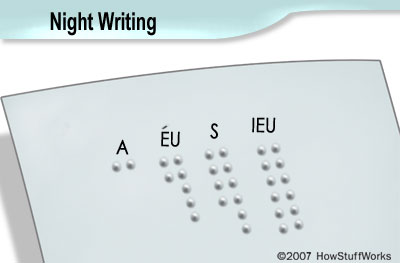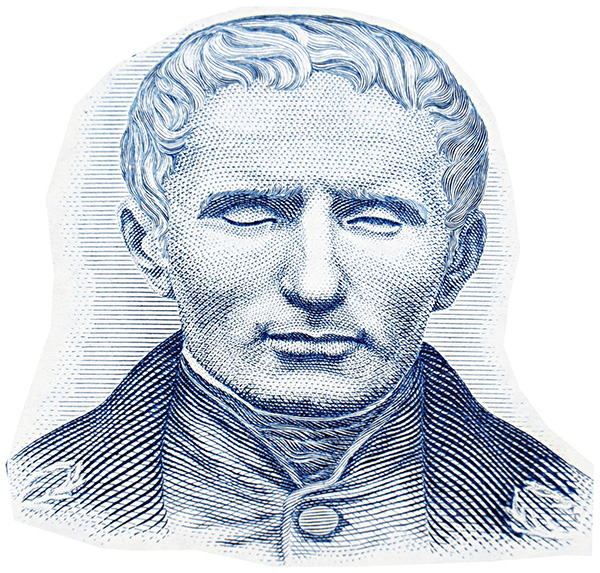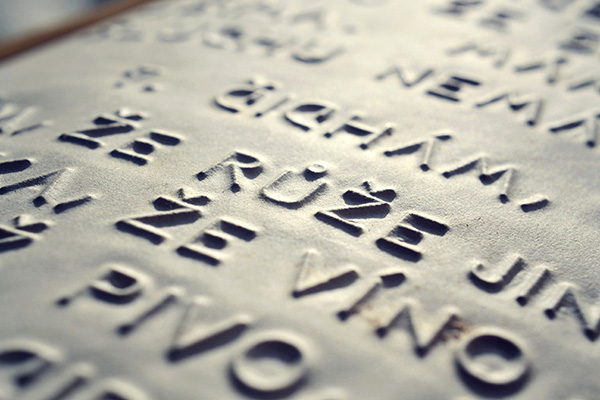About the History of Braille
Braille is an outstanding reading and writing system used by blind and visually impaired people who cannot access printed materials. The name of this system is derived from the blind Frenchman Louis Braille, who is the founder of this method. This method passed through several stages until it became what it is now.
How was Braille invented?
There have been many attempts to invent a method that enables the blind to independently read and write. Most of these attempts have focused on using letters that have a dot shape different from ordinary writing. However, these attempts failed, until Louis Braille succeeded in creating a prominent code that facilitated the identification of its letters quickly with one finger.
Touch reading
The idea that blind people can read by touching goes back to the blind Arab scholar, Zain al-Din al-Amdi, in the thirteenth century AD, when he used to write the letters of ordinary writing in a raised manner and recognize them without the need for someone to read to him. This method continued until the middle of the nineteenth century. There were special factories that printed books for the blind in this way on wood panels, but they were very large and the blind used to take a long time to read a single sentence. In the middle of the nineteenth century, a blind English teacher, William Moon, tried to develop this method; although it is still used on a small scale by blind people who lose their sight when they become older, it remains difficult and not practical, as mentioned.
Louis Braille finds the solution
When Louis Braille was working as a teacher at the School of the Blind in Paris, he expressed his dissatisfaction with the way the blind read due to its difficulty and the inability of the blind to write. Another coincidence led him to this amazing innovation, the braille method when he met the French man Charles Barbier, who showed him a tactile character code called “the Night Writing System”. Barbier had invented this method to enable French soldiers to communicate with each other in the darkness. Although the cells of this code were so many that the length of one letter could reach six dots, Louis Braille thought that the same idea might give the blind a viable means of reading and writing.

After several experiments, Braille found that a six-dots cell was small enough to accommodate a human finger, while, at the same time, it gave multiple combinations of dots that accommodated the alphabet and punctuation.
Braille published a book explaining his method in 1829, but his new method initially faced strong opposition from officials of schools and institutes for the blind – even at the school where he worked. The blind were learning braille outside of formal school hours. This remained so until France officially adopted braille in 1854, two years after Braille’s death, thanks to his students who fought for the adoption of this method
The braille method then moved to different languages of the world, for example, it was first used in the United States in 1860 and Britain in 1868.
Braille then was available for Arabic. Mohammed al-Ansi, former head of the Royal Diwan of Jordan, is allegedly the first to introduce it. The interesting thing is that, until 1951, the braille method was read in the Arab world from right to left, but after the invention of braille printing machines, all machines were imported and printed from left to right, a general conference was held for organizations caring for the blind in the Arab world to decide to read braille from left to right.
Braille continued to evolve in terms of both the font and the means of reading and writing. At the font level, the writing method has appeared with abbreviations in all languages, including Arabic, a method that relies on writing one or more words in one or two cells. Abraham Nemeth, a blind mathematician, created the Nemeth Braille Code to write mathematical problems and equations in a unified global style. Recently, computer braille has appeared, which depends on an 8-dot cell instead of six, to accommodate a greater number of signs and symbols, especially computer signs. You can review braille writing styles.
Braille Tools
In terms of braille reading and writing tools, here’s when the most prominent braille tools appeared:
- In 1951, David Abraham, a woodworking teacher at Perkins American School for the Blind, designed and produced the Perkins paper writing machine, which is still popular to date.
- In 1971, the first braille printer appeared to print computer text on braille paper.
- In 1975, the German University of Dortmund produced the BRAILLEX device, the first device to contain an electronic braille display.
- In 1976, Duxbury Translator was first installed at the Canadian Foundation for the Blind and was the first commercial program to convert plain text on a computer into braille dots, for use by printers and braille displays.
- In 1982, the first electronic braille display called VersaBraille was launched in the United States of America by Telesensory, a device that displays the text written on a computer screen in braille on an electronic braille display.
- In 1987, Braille ‘n Speak, the first portable electronic braille notebook to feature a Perkins-style braille keyboard was launched. The great success of this device at that time opened the door for the development of the electronic braille notebooks used today.
- In 1995, Duxbury for Windows was launched, making braille translation available on the Windows operating system.
- In 2004, HumanWare released the Brailliant, the first electronic braille display that could work via Bluetooth.
So, braille is no longer about dots on paper, displays and electronic diaries/ notebooks allowed the blind to read whatever they want in their own way without the need for others’ help, and they no longer need to keep and carry hundreds of folders, but a small portable device provided them with access to thousands of books, references, and websites. Companies operating in this field are still annually providing new technologies and devices that support the braille method because of its importance in the lives of the blind. Braille is still developing, and the Arab blind people must benefit from this development and enhance and develop themselves culturally and scientifically.


